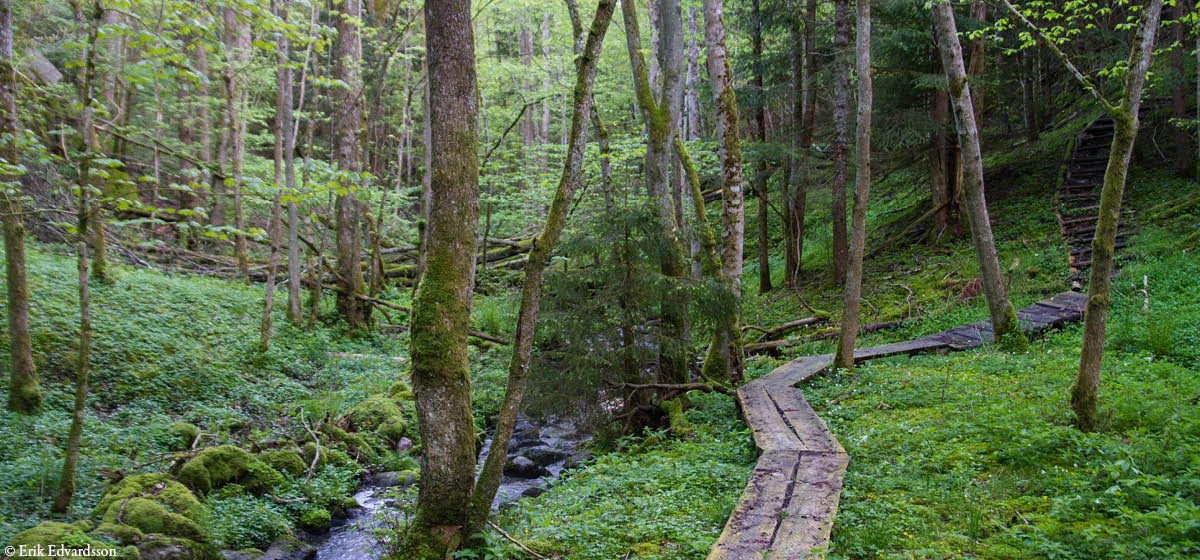The Ecopark project
The Ecopark is one of Nordens Ark's largest species conservation projects. The project is taking place in the forest and cultural landscape that surrounds the zoological park on the grounds of Åby Säteri. Around 300 hectares of land is being restored.
What we do at Nordens Ark
The project started in January 2011. One of the goals is to benefit endangered species and biodiversity by recreating the open, species-rich landscapes of the 18th and 19th centuries that were characterized by grazing livestock. We are gradually changing the land use from spruce-oriented forestry to traditional open-field grazing with old native breeds of both cattle and sheep (Swedish mountain cattle, Swedish red poll, Väne cattle, Gotland sheep, Värmland sheep, etc.). We recreate meadows by mowing and sowing meadow flowers.
Today, many threatened native species of insects, butterflies and birds that are depended on a grazed landscape are disappearing from large areas of Sweden. Parts of the landscape will also develop without major intervention, where trees are allowed to age and die at their own pace. Such measures are known to benefit many endangered species, for example the white-backed woodpecker and the lesser woodpecker, which today have a very difficult time. The measures and restoration are monitored, and we follow the changes for different species groups. Read more about the various conservation activities in the Ecopark here.
A large part of the Ecopark project focuses on education and information for visitors. The Ecopark gives university students the opportunity to do project and thesis work on nature conservation in practice, ecological restoration, species inventories, and more.
News from the project – April 2025
We have just finished this year's prescribed burning in the Ecopark. With a little rain this spring it has been dry so it was easy to burn. Now we are waiting for the cows to be released into the pastures and do their job during the summer. We are also taking inventories of the flowers that were sown last autumn to see which species have managed to grow in the different treatments. We are already seeing small plants sticking up above the ground so it will be an exciting season.



